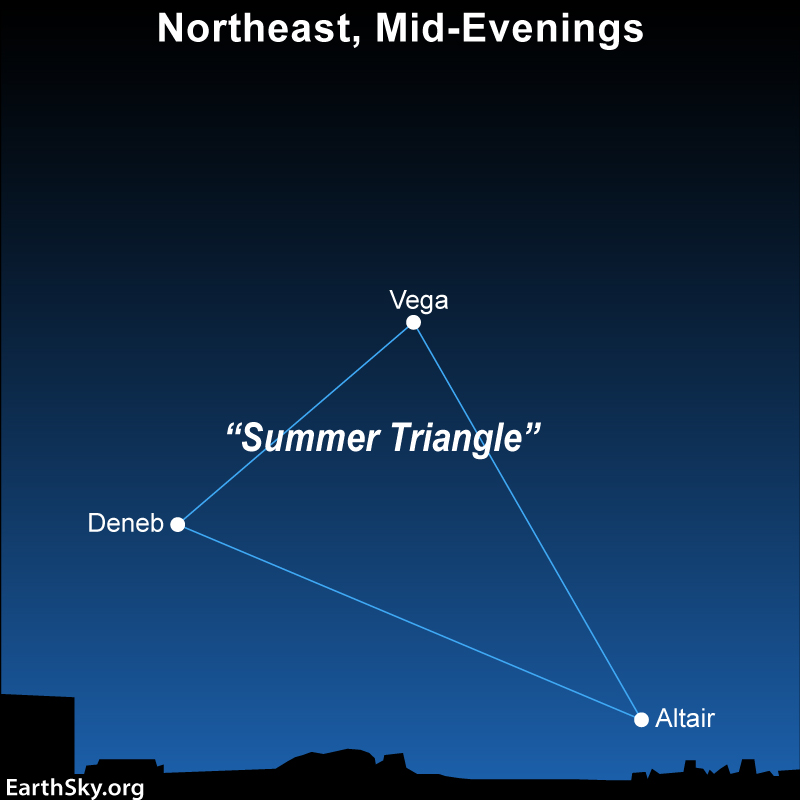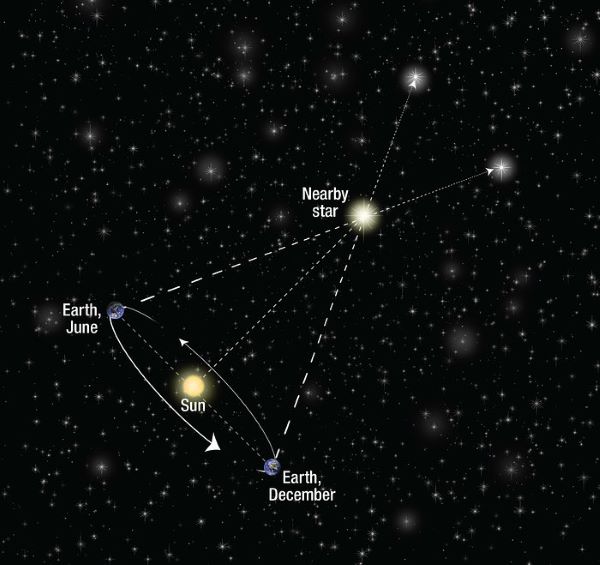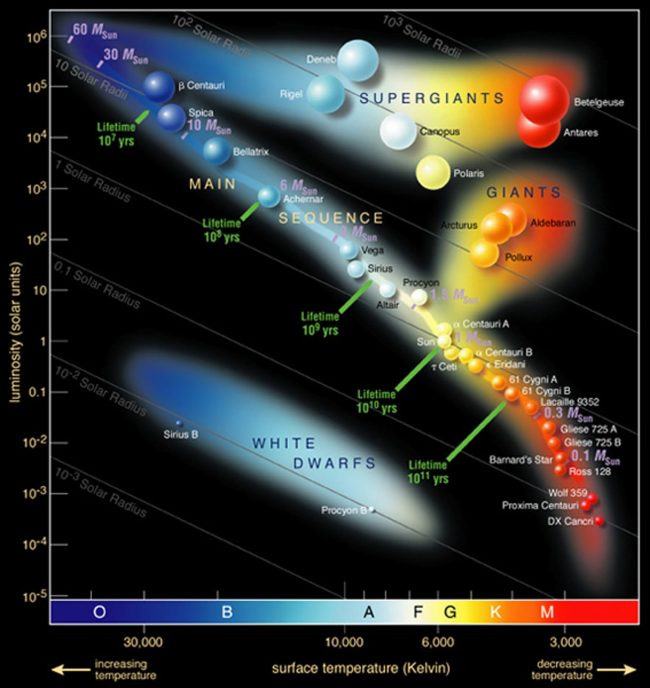
How far away is Deneb?
The beautiful Summer Triangle is coming back into view for convenient evening viewing. This asterism consists of three bright stars in three different constellations. Now notice the star Deneb in one corner of the Triangle. When you gaze at Deneb, you’re gazing across a great expanse of space. We don’t know the exact distance to Deneb. We see a range of distances for this star from about 1,600 light-years to about 2,600 light-years. Either way, Deneb one of the most distant stars we can see with the eye alone.
So distance estimates vary for this star. And they vary a lot! Why?
The answer is a glimpse into the process of science, and the way that astronomers use advancing technologies to try to improve on previous discoveries.
Discovering Deneb’s distance
Scientists have obtained estimates for Deneb’s distance through a variety of methods. Some of these methods involve theoretical models related to the way stars evolve. Some assume Deneb’s membership in Cygnus OB7, a star-forming complex within our Milky Way galaxy.
ESA’s Earth-orbiting Hipparcos Space Astrometry Mission provided the most significant modern measurement of Deneb’s distance in the 1990s. Hipparcos gathered astrometric data on Deneb. Early analyses of the data indicated a distance of somewhere around 2,600 light-years. That’s the figure you still see most often today.
But, since then, various groups of astronomers have re-analyzed Hipparcos data. This is because computer power, which gets stronger with each passing year, helps to improve techniques for analysis. For example, the peer-reviewed journal Astronomy and Astrophysics published a study in 2009, using a newer method of analysis (skip to the last page for Deneb).
This new analysis showed a distance to Deneb that’s barely half the widely accepted value. The study suggests 1,548 light-years as the distance, with a range between 1,336 and 1,841 light-years. That’s a big ballpark figure.
So is Deneb 1,600 light-years away or 2,600 light-years away? The fact is, we don’t know. Either way, it’s still one of the most distant stars we see with the unaided eye.

Why does Deneb’s distance matter?
Distance matters because it can give us other measurements, too. If astronomers don’t know exactly how far away Deneb is, they can’t get accurate numbers of its size, mass and energy output.
ESA had a second astrometric satellite – the magnificent Gaia space observatory – that was in a distant orbit similar to that of the James Webb Space Telescope. Gaia launched on December 19, 2013. Its five-year nominal mission ended in July 2019. However, the mission was extended to December 31, 2025. And Gaia was officially powered down in March 2025. Gaia’s goal was to measure the positions and distances of stars with more precision than ever before, and it exceeded expectations. We really can’t say enough about the incredible things we’ve learned about our Milky Way galaxy via Gaia. Click here for a few of Gaia’s discoveries.
However, a new estimate for Deneb’s distance wasn’t included in Gaia’s 1st data release, in 2016. And it wasn’t included in Gaia’s 2nd data release in 2018. How about the 3rd data release? Nope, not there either. The 4th data release is expected to come out in 2026.

Deneb was too bright for Gaia
Gaia produced data on some 2 billion sources in our Milky Way galaxy. But it couldn’t image Deneb, the 19th brightest star in our sky. That’s because Gaia was not able to measure the distance to bright stars. They would have saturated Gaia’s sensor making measurements impossible. Gaia’s brightest possible star was magnitude 1.71. Deneb is brighter, at magnitude 1.25.
And it’s not that Gaia didn’t try. In 2018, the Gaia team posted an employment opportunity specifically asking for someone to find a way to image bright stars with Gaia. But that position was never filled.
When Gaia was launched, its team was working on the problem of imaging bright stars. Paper after paper after poster addressed the problem of Gaia not being able to image bright stars. But it never happened.
So, how far away is Deneb? If it is part of the Cygnus OB7 group, then it’s as far away as that group: about 2,050 light-years. But the center of that group is 5.2 degrees to the northeast of Deneb, so Deneb might not be a part of it.
Interestingly, in 1838, the first star for which the distance was calculated was 61 Cygni, which lies less than 8 degrees southeast of Deneb.
Bottom line: The star Deneb – part of the famous Summer Triangle – is one of the most distant stars you can see with your eye alone. But we don’t yet know its precise distance.
Read more: Delta Cephei helps measure cosmic distances
The post Deneb is an incredibly distant star. But how do we know? first appeared on EarthSky.

